
About This Quiz
Did you know there are actually over 1,000 breeds of cattle in the world? That's pretty intense for a creature that so few of us will ever even see up close in real life. Fact is, most people don't pay a lot of attention to cattle. They've been relegated to livestock so thoroughly that the average person knows very little about them. We see them in the country if we go for a drive, standing out in fields chewing some cud, but most people never interact with them and find out the differences between one breed and another.
We know our cat breeds and our dog breeds; some of us even know a lot about animals like horses and snakes and tarantulas. But cattle? They just don't get the love and respect they deserve. Not from most people anyway.Â
But you're different, right? You know your Angus from your Guernsey. Your Holstein from your Black Hereford. Your Jersey from your Longhorn. You know enough about cattle that you could ace any quiz on the subject, especially one that includes images, right? Well, we'll see about that. If you're a real cattle expert, then show us your stuff and see if you can even get four in this quiz!

Texas Longhorns are some of the most easily recognizable cattle in the world, thanks to their massive horns that can grow to an utterly baffling size. The world record holder for the longest horns is a steer named Poncho Via, whose horns measure 10 feet, 7.4 inches from tip to tip.
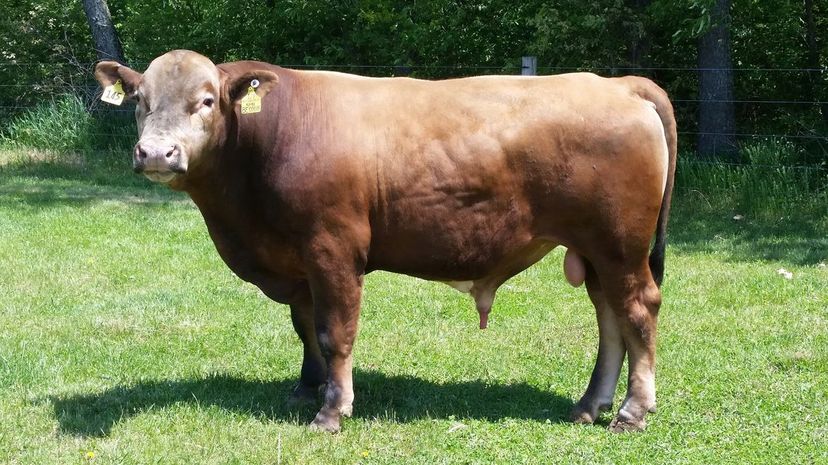
Beefalo, which are a crossbreed of bison and cattle, have a most unusual pedigree. Colonel Samuel Bedson, warden of Stoney Mountain Penitentiary in Winnipeg, Manitoba, bought eight bison in 1880 and bred them with some domestic cattle.
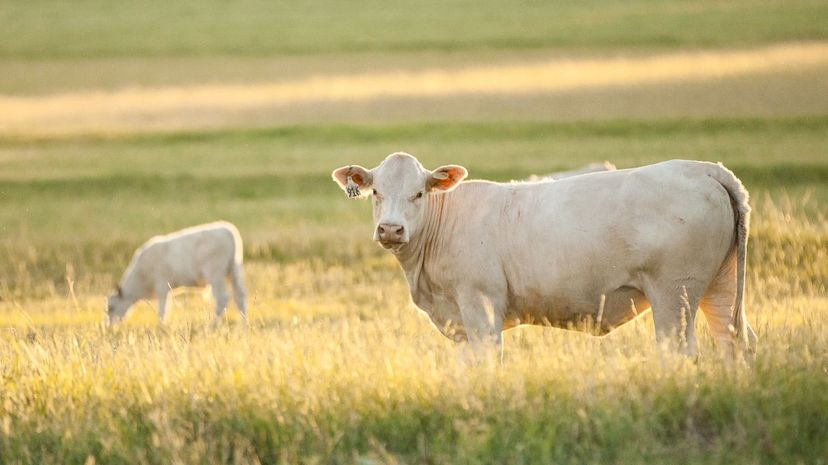
Charolais cattle come from France originally but have become very popular in the U.S. as well. They're pretty durable cattle that can handle both warm summers and cold winters. Because they tend to be stockier than British breeds, they're crossbred frequently with other cattle to improve their size.
Advertisement

Herefords are a British breed of cattle that are popular because they mature quickly relative to many breeds and bulk up quickly. They were originally bred to meet rising demands for beef, so their purpose was just to be bigger and meatier than older breeds.
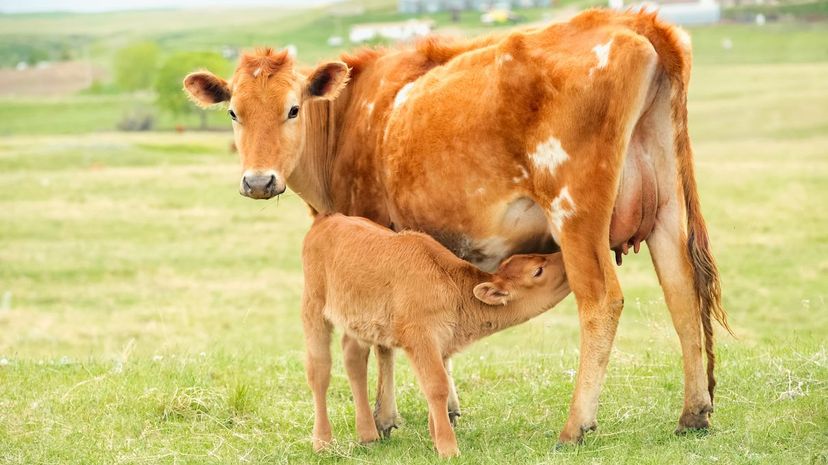
Jersey cows are known as incredibly prolific milkers. A cow can actually produce 10 times its weight in milk, which is known for having an exceptionally high butterfat content, per lactation. Since a cow can weigh over 1,000 pounds, that's pretty amazing.
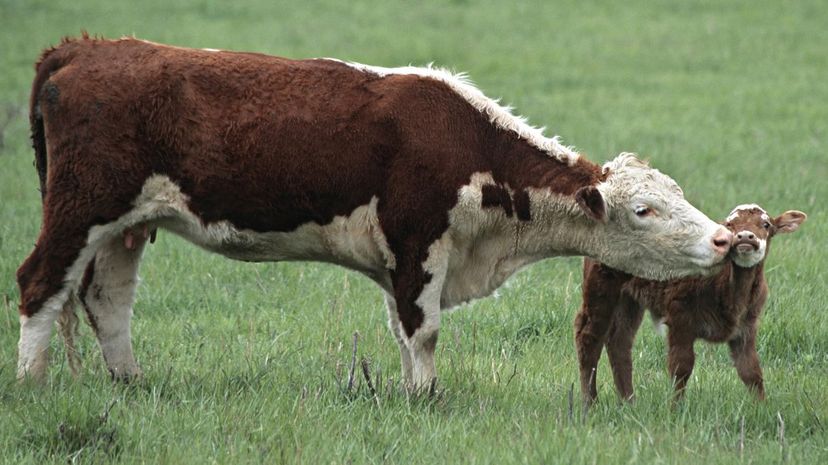
Guernsey cows originally come from the Channel Islands, just like Jersey cows. Their milk has a yellowish-orange tinge, thanks to high levels of beta-carotene, which is the same stuff that makes carrots orange.
Advertisement
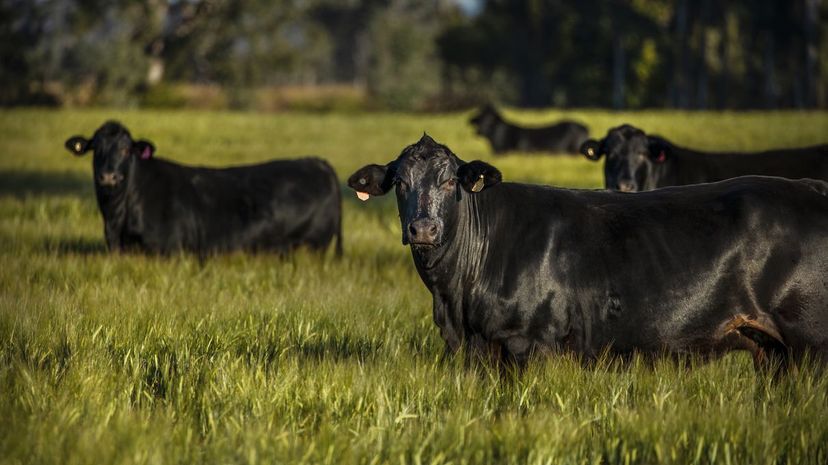
Black Angus cattle are extremely popular, with over 350,000 of them registered in the United States alone. They're popular mostly for the quality of their meat, but they're also easy to raise compared to many other breeds, as they eat well and are usually good mothers.
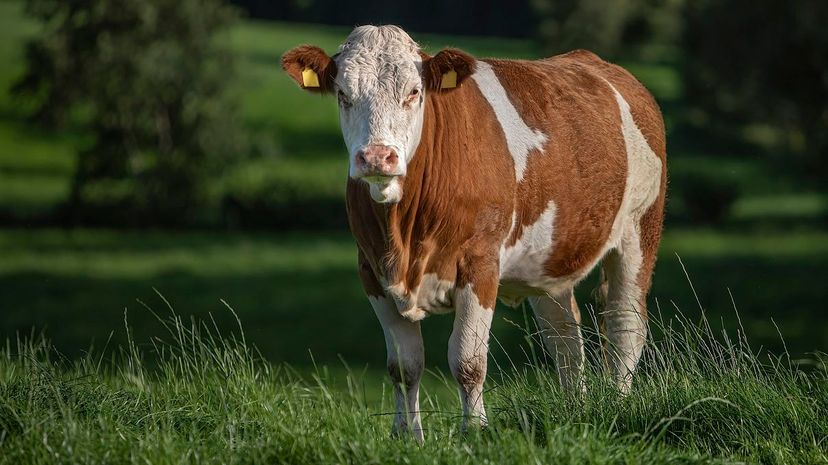
Though relatively new in the U.S., Simmental cattle have been around for a very long time in Europe, with references dating back to the Middle Ages. They've been exported all over the world and were at one time the most popular breed in the Soviet Union.

Red Angus are obviously closely related to Black Angus, but they are distinct in their coloration. In fact, aside from the color, there's no genetic difference between the two breeds whatsoever, even though they're considered distinct.
Advertisement
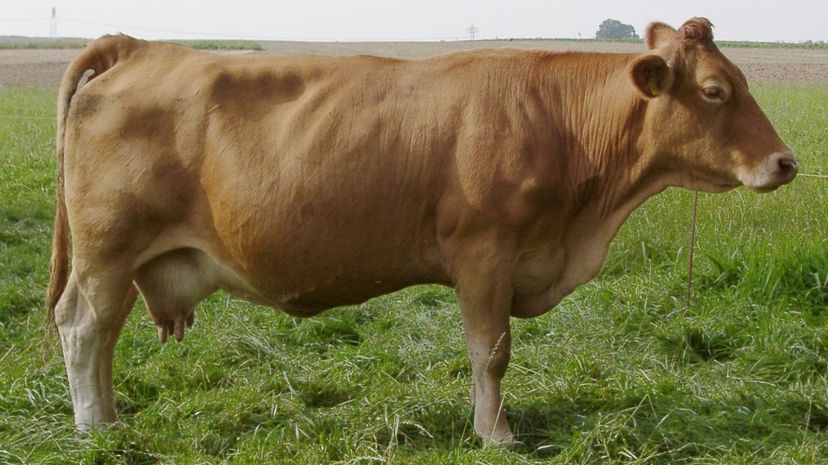
Gelbvieh cattle are originally from Germany, and their name actually means "yellow cattle" in German. Thanks to extensive cross-breeding over the years, you can also find plenty of black Gelbvieh cattle, though, making the name a little less on the nose.

Chances are, when you picture a cow, you're picturing a Holstein. These black and white dairy cows have been in the U.S. since the 1800s. A single Holstein can produce over 60,000 pounds of milk in its life.

Limousin cattle get their name from a region in France. In French, they add the E on the end, so the cattle share the name of the fancy car we all associate with the rich and famous, which also gets its name from the same place.
Advertisement
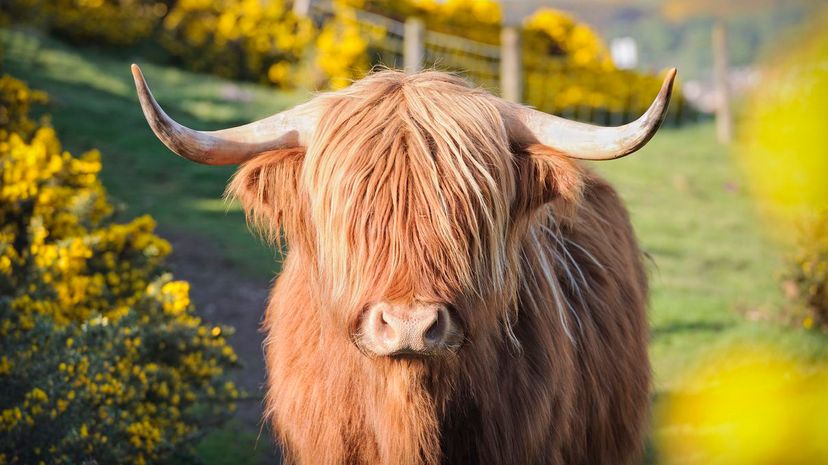
Highland cattle are native to the Highlands of Scotland. Though they're not super popular in North America or other parts of the world, the beef they produce is actually lower in cholesterol than most beef and is gaining popularity as a result.
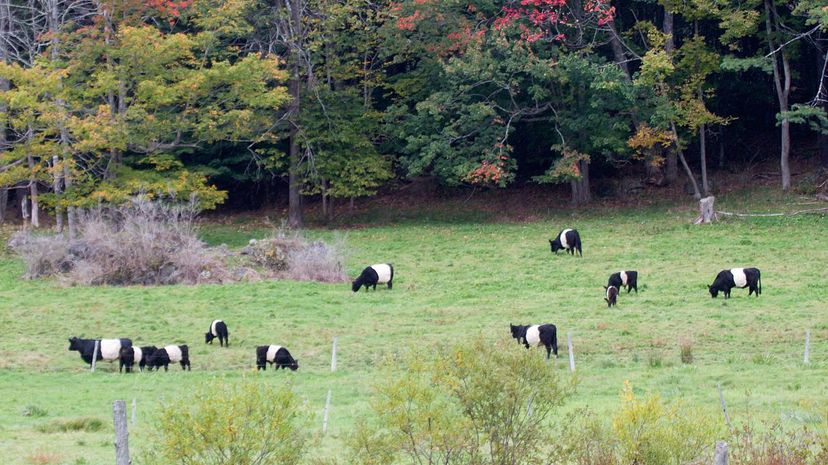
Belted Galloways, so named because they tend to have a single band of color around the midsection that looks like a belt, are usually raised as beef cattle. Sometimes a Galloway will be used for lawn maintenance because they're willing to eat any rough, dry, awful grass other cows avoid.

Brahman cattle are beef cattle, bred from a mix of Indian breeds. They're remarkably sturdy animals that can withstand heat, and their loose skin ensures they don't feel most bug bites, either. They're generally pretty docile, and you can ride them, too.
Advertisement
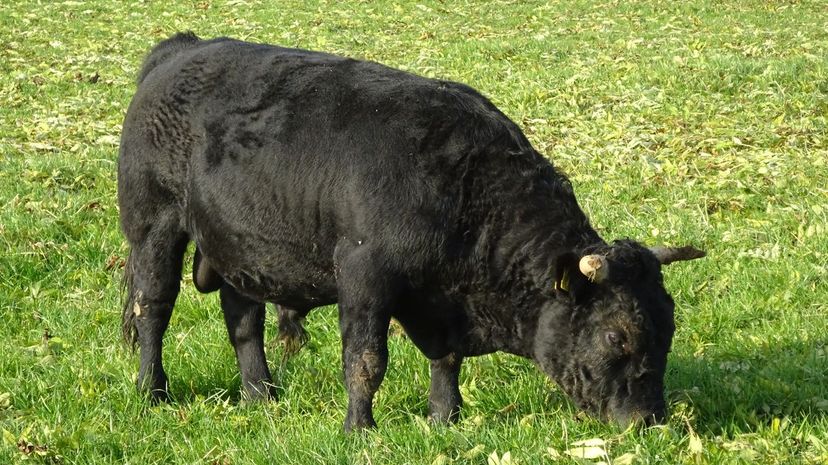
Dexter cattle come from Ireland and are much smaller than most common breeds. They're generally about one-third the size of a Holstein, which still means a bull can grow to be about 1,000 pounds. They used to be rather rare, but they're becoming more popular.

Piedmontese cattle come from Italy and are often recognizable because they look like masterful bodybuilders. Not all Piedmontese will look this way, but they carry a gene that allows extra musculature in the thighs. The result is some extra beefy cattle.
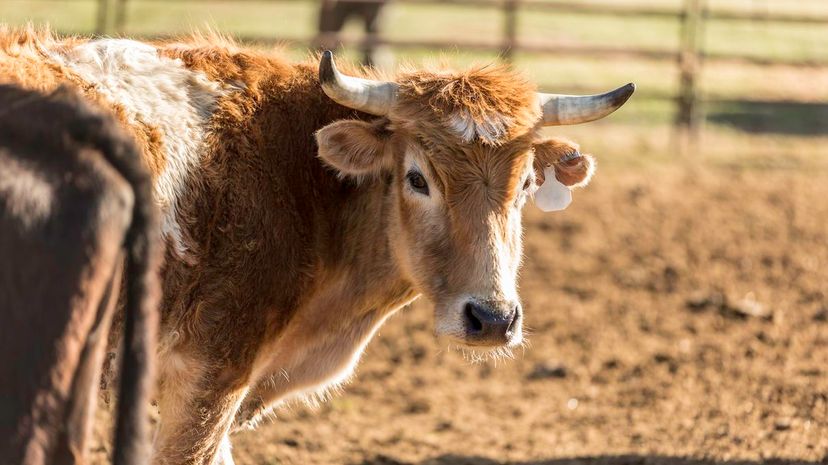
Shorthorns, as you can guess, have short horns. They were bred to be dual-purpose cattle, so you could farm them for beef or dairy, but eventually breeding led them to become two distinct breeds. Now you can get Beef Shorthorn and Dairy Shorthorn.
Advertisement

Sometimes called Ankole-Watusi, the Watusi is easily identified by its giant horns. Less noticeable but still noteworthy is the milk these cows produce, with a very high butterfat content of about 10%. Most dairy cows produce milk with butterfat content around 4%.
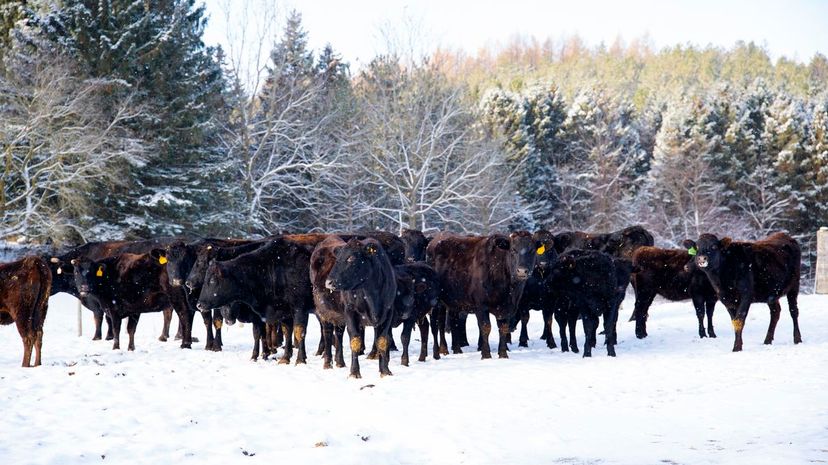
Wagyu cattle produce the world-famous and extremely expensive Kobe beef, but that's not the only kind of beef you get from Wagyu. They also produce Matsuzaka, Yonezawa, Mishima, Omi and Sanda beef, depending on where in Japan the cattle are raised.

Waguli is a breed of cattle that was created by crossbreeding Japanese Wagyu with Zimbabwean Tuli cattle. The purpose was to try to make a superior meat-producing breed that could also handle hotter climates than typical Wagyu.
Advertisement
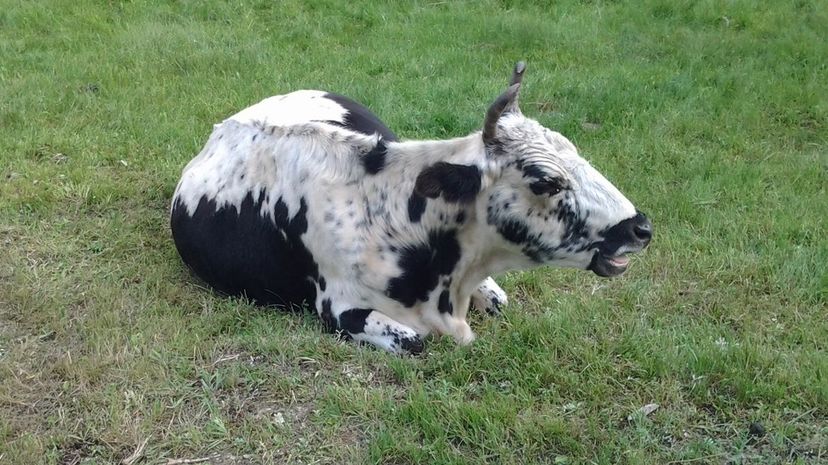
Yakutian cattle are a Russian breed that can withstand brutally cold temperatures, dipping as low as -40 degrees. Unfortunately, there aren't a ton of these cattle left in the world and only about 28 purebred breeding bulls left in Russia.
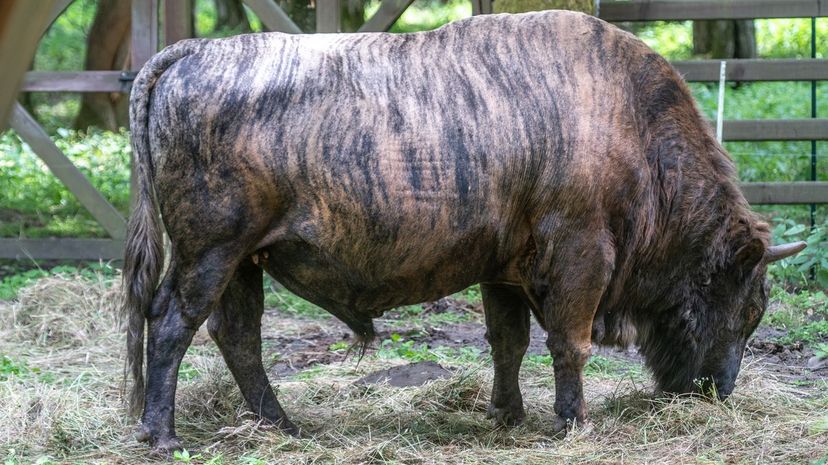
The Zubron is a crossbreed between domestic cattle and a wisent, otherwise known as a European bison. The name "Zubron" is Polish and was actually chosen in a contest that ran in a magazine back in 1969.
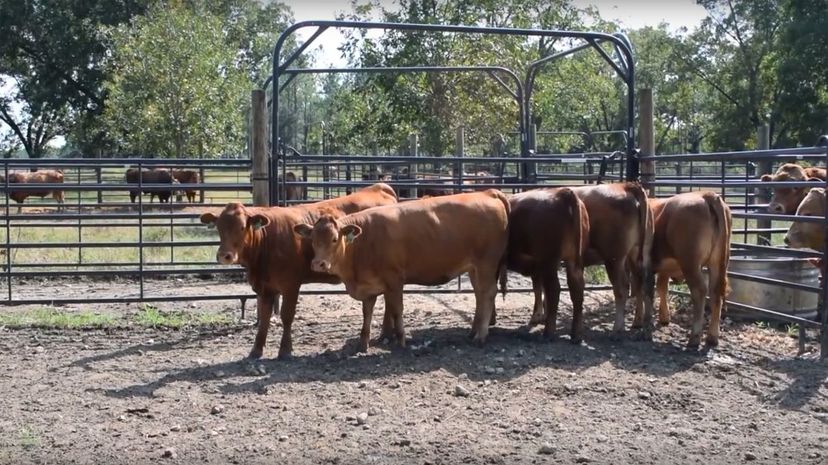
Akaushi cattle are native to Japan and are now being raised in the United States as well. The quality of beef is considered higher than most beef, as Akaushi cattle are a kind of Wagyu beef, which is pretty much the top of the line in the beef world.
Advertisement
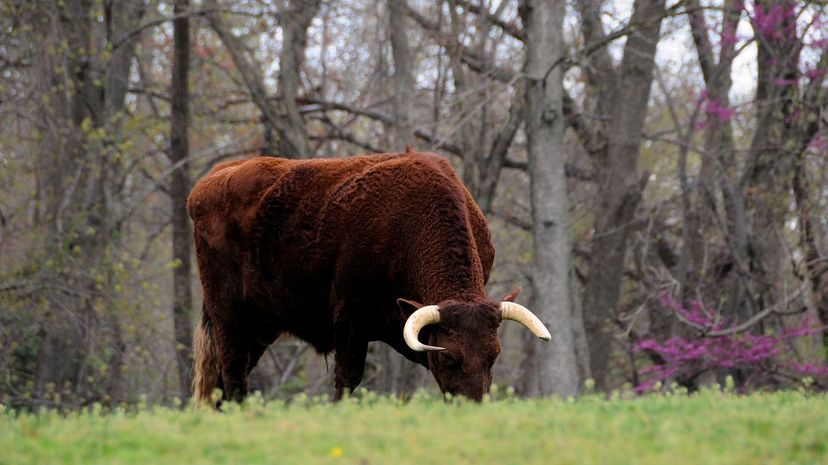
American Milking Devons, despite the name, are not necessarily milk cows. They can be used for that purpose, of course, but they also serve as beef cattle and draft animals. The breed is not particularly popular in the U.S. these days.

Ayrshire cattle are native to the Ayrshire region of Scotland, though it's believed that sometime in the past they originally came from Holland. The breed grows horns, but they're often removed for safety reasons, as they can grow rather large, up to a foot long, and the cattle can have some aggressive tendencies.
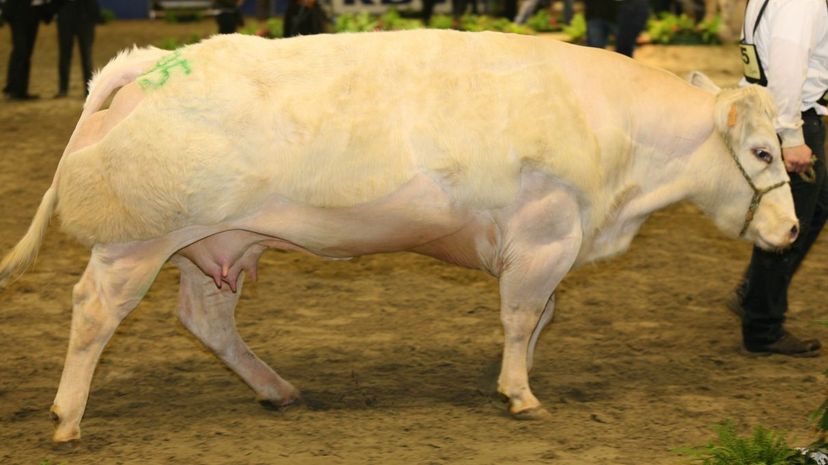
Belgian Blue cattle have the same condition that causes excessive muscle development as Piedmontese cattle. It allows them to easily convert fat to lean muscle tissue, and the result is beef that's remarkably lean but not particularly tender.
Advertisement
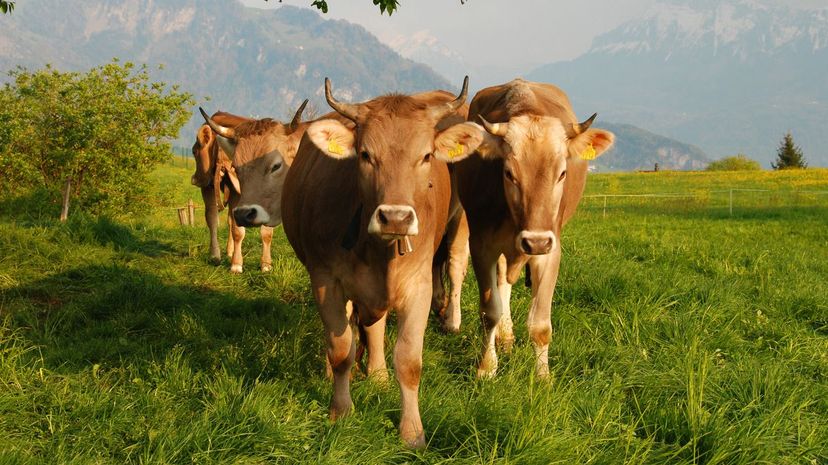
Brown Swiss cows produce milk with a high butterfat content that has unique properties, making it well-suited for cheese. They're farmed all over the world, with a population in the millions.
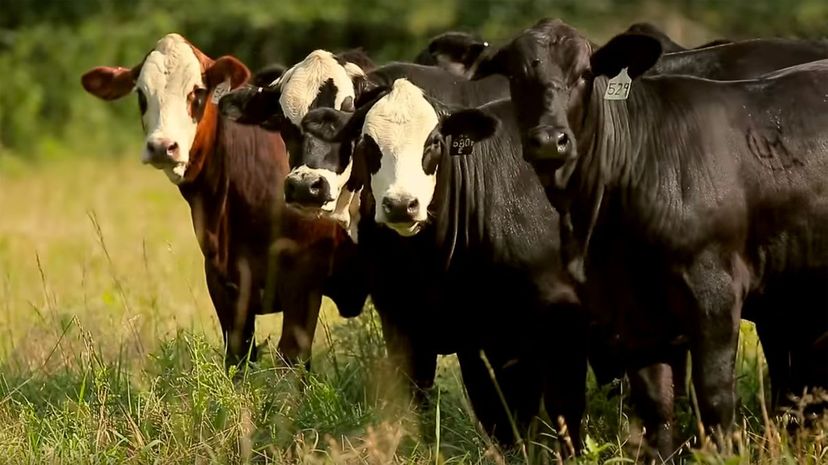
Brangus cattle are a crossbreed of Angus and Brahman cattle. To become a registered Brangus, the cattle need to be bred to exacting standards, including parentage that makes them 3/8 Brahman and 5/8 Angus.
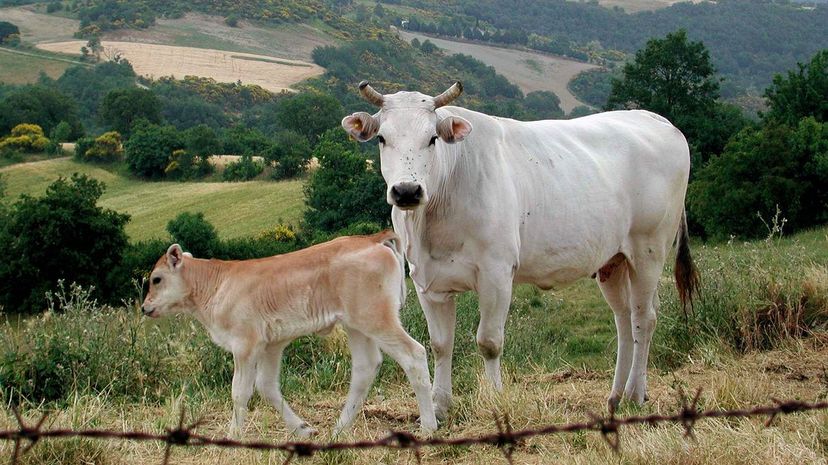
Chianina cattle are absolutely massive, the tallest and heaviest breed of cattle in the world. Bulls can weigh over 3.500 pounds, while oxen can grow to stand 6 feet, 7 inches at the shoulder, dwarfing all other cattle.
Advertisement
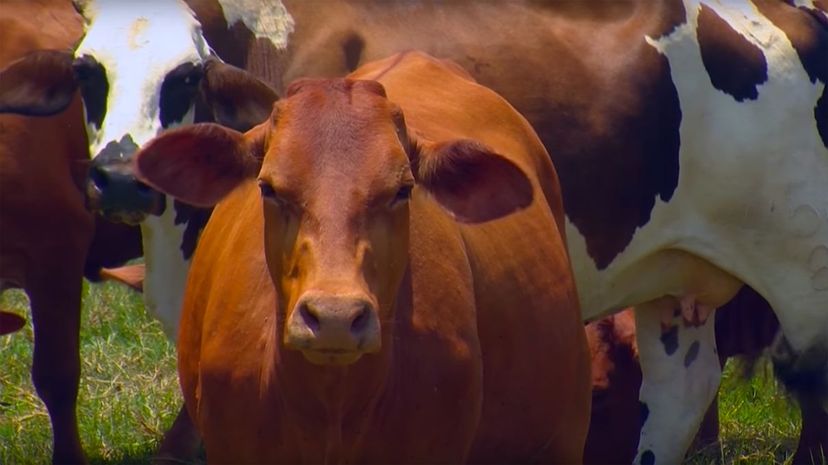
Beefmaster cattle have the most superhero/supervillain name of all cattle, so that's something. The breed was created in the 1930s as a cross between Hereford, Shorthorn and Brahman. The result is a stout breed that's good for beef or milk.
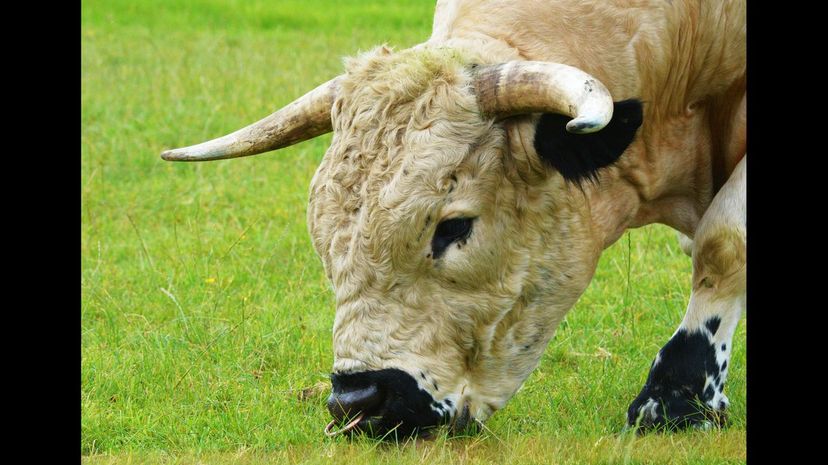
White Park cattle are thought to be an extremely old breed in Great Britain, with roots dating back literally thousands of years. They're generally easy to pick out of a crowd - they tend to be completely porcelain white with only a few black accents.
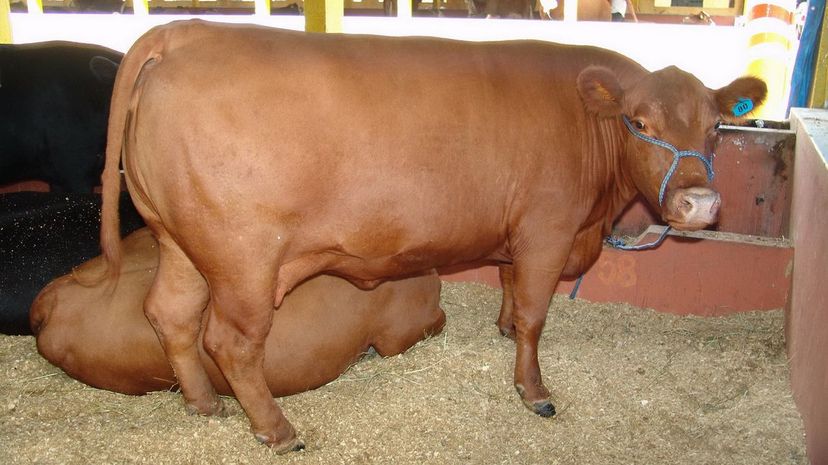
Santa Gertrudis cattle are the result of crossbreeding Brahman with Beef Shorthorn cattle. They have been exported all over the world, thanks to their tolerances - they can handle high heat, ticks and illness better than many other breeds.
Advertisement

Chillingham cattle are found on the grounds of Chillingham Castle; hence, the clever name. They're very rare, and most live in a small, wild herd on the castle grounds. As they're not actually tame, they offer some insight into how wild cattle may have lived before domestication.

English Longhorns bear a bit of a resemblance to their American cousins, the Texas Longhorns, but their horns don't extend out like the Texans'. Rather, they curve inward. Despite the appearance of these animals, they tend to not be particularly aggressive.

North Devon cattle are adaptable, and as such have left their native England and been established in North and South America, as well as Australia. They're known for their ability to forage and eat things many other cattle won't, but they do tend to be slower to mature than some breeds.
Advertisement

Senepols were bred to handle the climate of a tropical island better than traditional European breeds. The result was a breed that has since taken up residence throughout many African nations, South and Central America, Australia and the Southern United States.
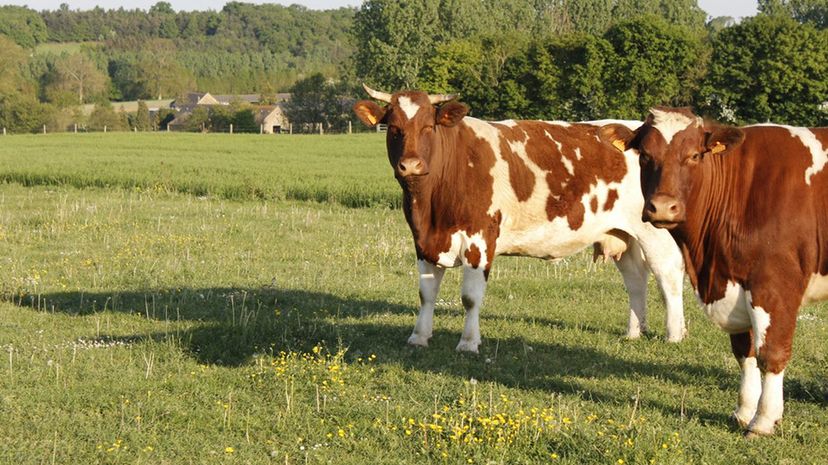
Maine-Anjou cattle come from northwestern France. They were originally bred for both milk and beef, but over the years the dairy industry has slowed, and now they're principally bred just for beef.
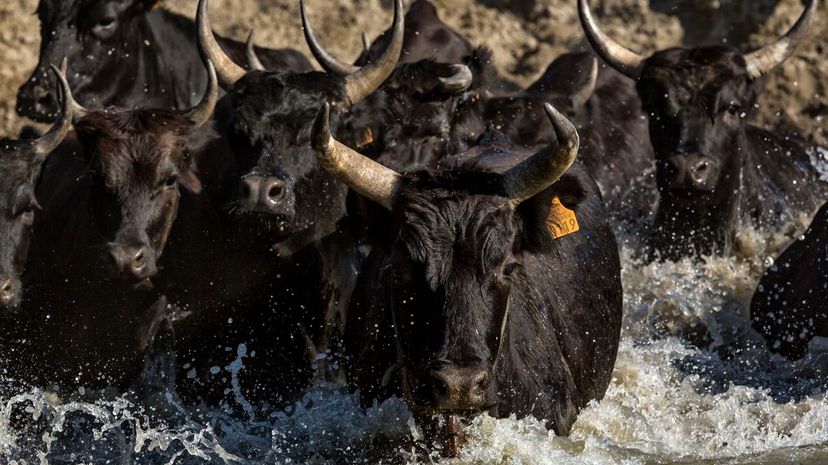
Camargue cattle are native to marshlands in parts of France. They're sometimes bred for a sport called "Course Camarguaise," which is like bullfighting without the fighting. Instead of hurting the bull, the human participants try to snatch a rose that has been placed on the bull's horns.
Advertisement

The Droughtmaster is the result of crossbreeding between Brahman and Beef Shorthorn cattle. As the name suggests, it was bred to withstand harsher temperatures than most cattle, and it was also bred to be resistant to ticks.